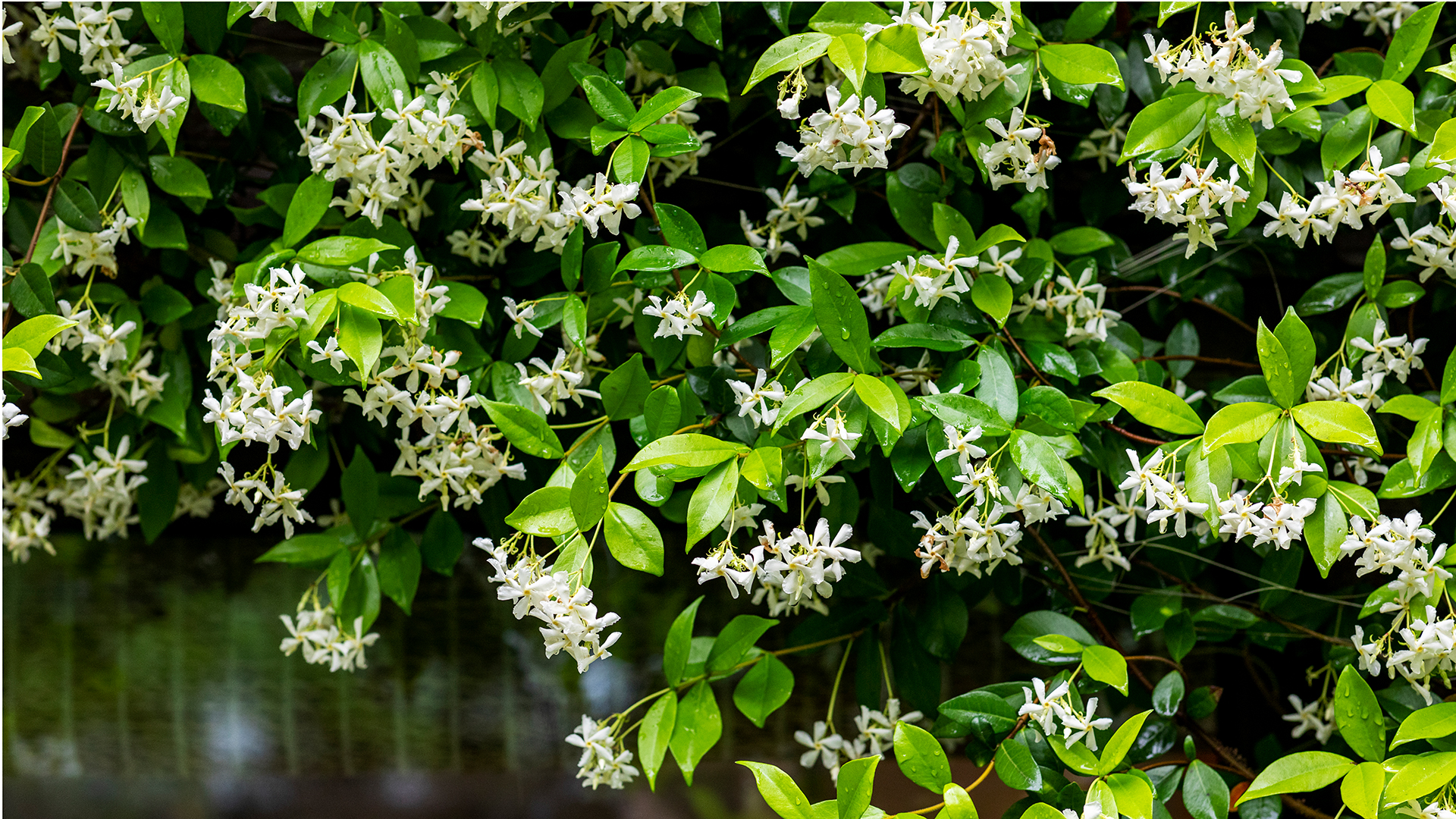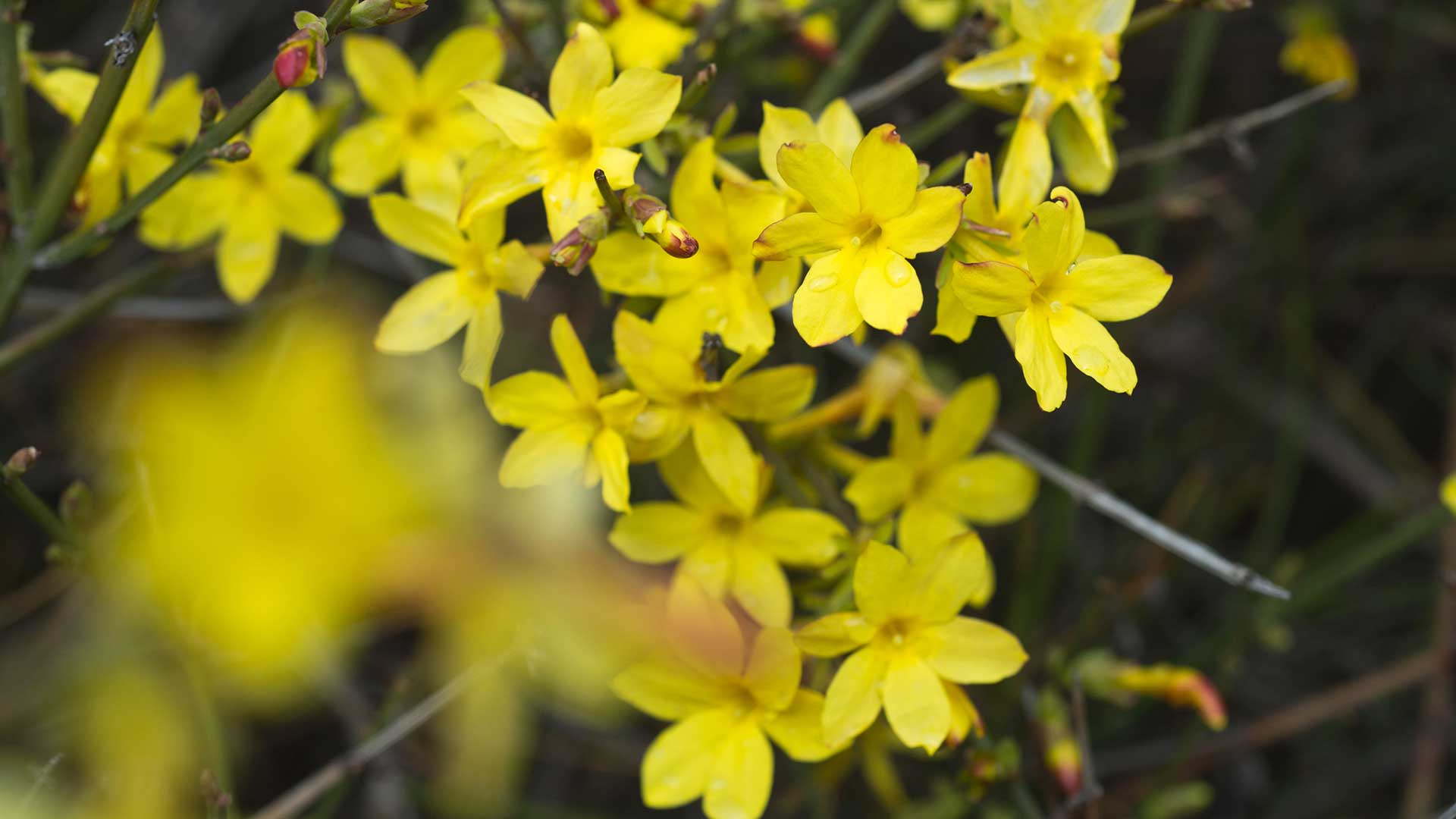How to grow jasmine for a wall of outrageously pretty, perfumed blooms
Ideal for covering walls and ugly fences, common jasmine is well worth growing at home


Jasmine is a brilliant all-rounder – fragrant, delicate and elegant. Is it any wonder, then, that so many people are still desperate to learn how to grow jasmine and reap the benefits of its perfumed blooms?
Yes, there’s something irresistibly romantic about jasmine. Easily one of the best fragrant plants around, it looks just as beautiful trailing over a sun-drenched archway as it does clambering all over an old brick wall or fence – and adding a sweet perfume to the air as it does so. Despite its exotic feel, it is surprisingly easy to grow, making it a favourite for those who love their outdoor spaces to feel a little bit magical.
While there are winter-flowering and indoor varieties of jasmine, too, it’s the classic summer jasmine that most gardeners fall for. Hardy, fast-growing and generous with its blooms, this classic climbing plant is a brilliant choice for everything from cottage-style gardens to contemporary patios.
How to grow jasmine
Learning how to grow jasmine is surprisingly easy, even if you’re short on space or time. In fact, with a little TLC, this plant can thrive in pots, borders, or trained up walls and fences, making it a brilliant addition to gardens of all sizes and styles. Plus, once it's established, it needs surprisingly little fuss, yet gives back so much.
Still, like all plants, even common jasmine has its preferences, so you'll need to do at least a dab of research if you want to cultivate this gardening trend at home.
"I rate jasmine for its intoxicating scent, resilience, and the way it effortlessly transforms a space with wild, natural beauty," says Christopher O'Donoghue, the director of Gardens Revived.

A gardener with almost two decades of experience under his belt, Christopher set up Gardens Revived with his brother, Andrew, in 2018 to create a thriving family business. Together, they have worked on residential gardens, listed buildings and gardens, flower shows and large estates with some exceeding 70 acres – many with historical significance.
Going on to explain that there are two main types commonly grown in the UK, Christopher explains that common jasmine (Jasminum officinale) is a "hardy, deciduous climber with highly fragrant white flowers from June to September".
Sign up to our free daily email for the latest royal and entertainment news, interesting opinion, expert advice on styling and beauty trends, and no-nonsense guides to the health and wellness questions you want answered.
"It's great for outdoor walls and fences," he says, sharing that he's covered his own boring brown fence with these pretty summer blooms.
"Winter Jasmine (Jasminum nudiflorum), on the other hand, isn't scented, but it adds a pop of bright yellow with its flowers over the darker winter months," he adds.
Whichever you pick, you can rest assured that jasmine will be just at home in a modern garden as it will among your favourite cottage garden plants – and they're relatively easy to keep happy, so long as you find them a spot in rich but well-drained soil with lots of sunshine (or at least partial shade).

What you will need
Just as you shouldn't begin mowing your lawn or pruning your roses without the right tools to hand, so the same is true when learning how to grow jasmine.
With this in mind, then, make sure you have:
- A jasmine plant, like this common white jasmine or winter jasmine from Crocus
- A general-purpose fertiliser, such as Westland Growmore Plant Feed from Homebase (although container plants will prefer a high-potassium liquid feed, like Levington Tomorite from Amazon)
- Some well-rotted garden compost or horse manure
- A good quality mulch
Your step-by-step guide
Now that you have everything you need, you can learn how to grow jasmine like an absolute gardening pro and add a touch of romance to your outdoor space in no time.
1) Pick your moment
While you can buy (and plant) jasmine throughout the year, it's best to plant your summer jasmine in the spring or autumn, and your winter jasmine in the autumn or winter.
Choose your moment, essentially.
2) Find the perfect location
If you really want to learn how to grow jasmine like a pro, you need to think about where you're planting it every bit as much as the how.
"The more sun, the more flowers," says Christopher, who advises you plant yours in a warm, sheltered spot in full sun or partial shade.
"Against a south or west-facing wall is ideal," he adds.
3) Prep the soil
As per our top gardening tips for beginners, you need to prep the soil if you want to grow jasmine like a pro.
The trick, then, is to mix in plenty of well-rotted organic matter or compost before you add one of the best plants for pollinators.

"The aim is to get your jasmine planted in well-draining, fertile soil," says Christopher. "Add some well-rotted garden compost or horse manure to the mix, then, and mix in some grit if you need to improve drainage."
4) Get planting
If you're learning how to grow jasmine, winter or summer, you'll find these climbers very easy to plant; all you need to do is dig a hole twice the size of the root ball.
"Position it at the same depth it was growing in the pot, and water it well to help its roots settle once it's in the soil," says Christopher.
Be sure to show your jasmine some support in the form of a trellis or wires; this should help it clamber where it needs to go.
5) Water and feed accordingly
While jasmine is one of the best perennials, largely because it tends to do its own thing and come back regardless, you will need to water yours regularly in dry spells throughout the first year.
After this point, jasmine in the ground shouldn't need any additional watering (unless it's a very hot summer), but container plants will need to be kept hydrated.
"It's also a good idea to mulch in spring with compost or well-rotted manure, and feed with a balanced liquid fertiliser every couple of weeks in summer," adds Christopher.
Hey, if it's going to keep one of the most alluring plants to liven up your garden happy, it'll be worth it.
6) And don't forget to prune
The final tip on our How To Grow Jasmine 101 guide is simple enough: don't forget to prune it! Much like we need to give our hair a good trim to keep it healthy and lustrous, so, too, must we do the same with these climbing plants.
"Summer jasmine will need a prune after flowering (late summer) to keep it tidy and encourage new growth," says Christopher, "while winter jasmine should be tackled in early spring after its yellow blooms have done their thing."
The aim is to remove any dead, damaged, or overcrowded stems, although both varieties of jasmine can cope with hard pruning if it's gotten a little out of hand.
FAQs
Does jasmine do better in pots or ground?
You might be wondering if jasmine will do better in pots or the ground, but we have good news: it can thrive in both, depending on the variety and your space.
"Common jasmine grows best planted directly in the ground, where its roots can spread and it has room to climb and flourish. It loves a sunny, sheltered spot with well-drained soil," says Christopher O'Donoghue of Gardens Revived.
"That being said, it also does well in large pots, so long as you feed it regularly, water consistently, and provide support for climbing. Just be aware that container-grown plants may need more help when it comes to overwintering."
Does jasmine come back every year?
Good news, jasmine does, as a general rule of thumb, come back every year.
"Most jasmine varieties are perennials, which means they come back year after year," explains Christopher O'Donoghue of Gardens Revived.
"Both common and winter jasmine are hardy in much of the UK and will return reliably each spring. However, some more tender varieties, like Jasminum polyanthum, may need to be brought indoors or kept in a greenhouse over colder months."
Now that you know how to grow jasmine, we suspect it won't be long before your garden is a perfumed wonderland.

Kayleigh Dray is an experienced writer and editor within the world of digital journalism. She kicked off her career in magazines with Cosmopolitan as a news writer. Kayleigh then went on to become part of the digital editorial team at Closer, before a successful seven-year stint at Stylist, where she took command as the site’s editor and editor-at-large.
Nowadays, Kayleigh can be found freelancing for a myriad of titles including Woman & Home, along with a role at Ideal Home where she waxes lyrical about her true love: gardening. She is currently giving her own backyard a woodland-inspired makeover – and there have been whispers of a vegetable plot, too.